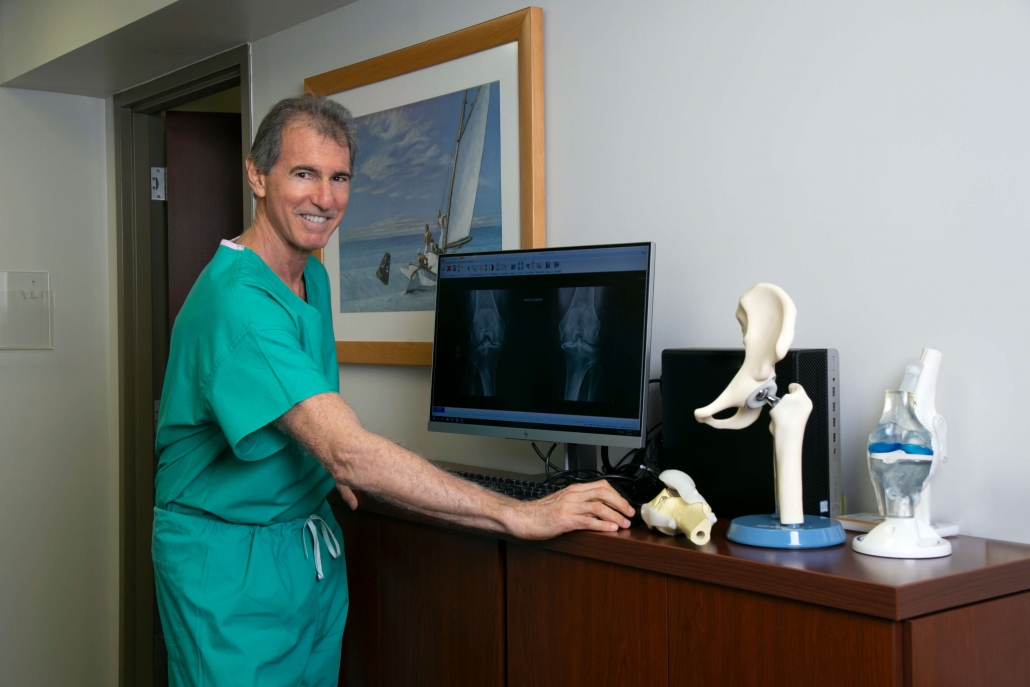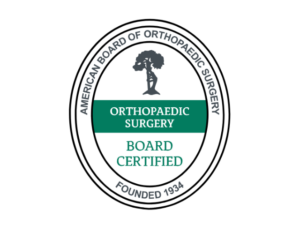Knee Conditions
The variety of knee conditions treated at The Leone Center for Orthopedic Care range from arthritis related knee joint destruction requiring a primary total (TKR) or partial knee replacement (PKR) to revising or “re-doing” a previous implant that failed. Here are the most common knee conditions we treat.
Degenerative Osteoarthritis (OA)
Degenerative osteoarthritis (OA) is the most common disease process resulting in the need for a knee replacement. Degenerative Osteoarthritis is a progressive joint disease that affects people’s ability to move their knee joint without pain. While OA is more common as we age, not everyone develops OA. There are two types: primary and secondary. While the symptoms may be the same for the both types, the underlying cause is different.
Secondary Degenerative OA
Secondary Degenerative OA is the result of an underlying or past condition that altered the knee’s normal architecture, resulting in joint deterioration and arthritis. This can be due to trauma, angular deformity, failed prior surgery, infection, inflammatory conditions such as rheumatoid or psoriatic arthritis, and developmental or childhood diseases. Ligamentous and meniscus injuries can also lead to arthritis. Obesity is the most common cause of secondary arthritis of the knee in our society and helps explain why the number of individual requiring knee replacement is increasing exponentially.
Primary Degenerative OA
Primary Degenerative OA, a less common condition, occurs when knees develop degenerative arthritis often without a clear underlying cause. A genetic or autoimmune basis is often assumed, as many times patients report other members of their family developing OA and needing knee replacement.
Failed Knee Replacement
While the vast majority of patients who have a knee replacement surgery achieve good outcomes, some do not. Failures can occur when partial or total knee components are not optimally positioned in the bone and when soft tissue sleeve that provides support is not balanced. A balanced knee is one where the tension or loads experience by the surrounding soft tissue sleeve closely matches the normal physiologic loads these ligaments were subjected to before the knee became arthritic and painful. These balanced ligaments help guide the knee through its normal complex movement as the knee flexes and extends. When a TKR or PKR is not balanced, patients often report pain and instability. The more closely the surgical reconstruction is able to “re-balance and realign” the knee to its pre-arthritic condition, the more comfortable and natural the knee feels.
Trauma resulting in a fracture or infection can lead to failure of a PKR or a TKR. The plastic liner can also wear down, causing inflammation, bone loss and instability. In knees that are not balanced, abnormal knee movement or kinematics can also lead to accelerated plastic wear and pain.




